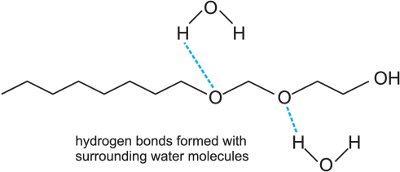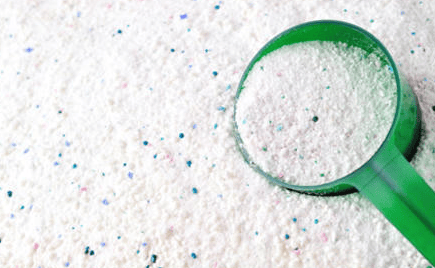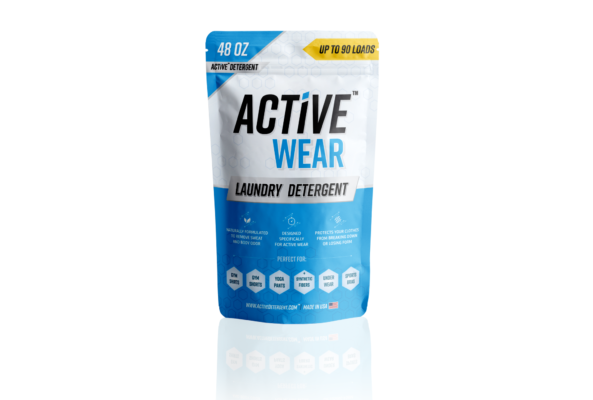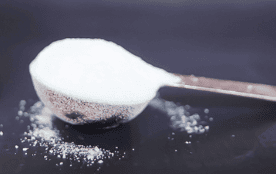The Best Green Laundry Detergent – Eco-Friendly Choices For 2024
-
 By
Natalie Foster
By
Natalie Foster
Have you ever considered what’s in your laundry detergent? As it turns out, most contain dozens of chemicals, many of which can be harmful. That’s why you want to do your research before deciding using a product. The last thing that you want is to expose yourself to something that’s potentially dangerous!
What’s in a Laundry Detergent?
Every laundry detergent contains different ingredients. Some are petroleum-based whereas others are derived from plants. At the end of the day, however, they contain the same basic components. The difference lies in how much of each ingredient there is and how they’re combined with other substances. Let’s take a look at some of these ingredients below.
Alkalies: These compounds raise the pH of the wash water. In doing so, the detergent is able to break up oil, dirt and other debris more efficiently. Some of the most common alkalies used in detergents include potassium hydroxide or sodium hydroxide.
Surfactants: These molecules perform multiple roles. For one thing, they help the detergent penetrate and wet the fabric. Not only that, but they help to loosen soils. In fact, they also emulsify and keep them suspended in the solution. This action allows you to easily rinse away the debris.

Catalytic Enzymes: These enzymes help the detergent dissolve soil so that they can be washed away. If anything, they’re one of the most important components. Without them, our clothes wouldn’t clean nearly as well. Some examples of catalytic enzymes include protease, cellulase, lipase, amylase, and, pectinate.
Fragrances: Fragrances are often added to detergents to mask the smell of other ingredients. While effective, however, they’re not the best health-wise. They can cause allergies and skin irritation, such as dermatitis.
Other things in laundry detergent:
- Water conditioners to inhibit color transfer
- Preservatives to prevent contaminants
- Optical brighteners that improve the look of clothes
- pH modifiers
- Fillers (sodium sulfate, sodium silicate, etc)
How do Laundry Detergents Work?
Water alone isn’t enough to clean clothes. Why? It won’t attach to the dirt and grease—that’s why you need to use detergent. The surfactants, which we mentioned earlier, has two ends. One is strongly attached to oily substances whereas the other is attracted to water.
Ultimately, how it works is that the surfactant will mix with water during the wash cycle. The oil-loving ends will tend to attach themselves to the grease on the fabric. The tumbling motion from the agitator makes this easier by breaking the oil molecules into small pieces. As for other deposits, those will be broken down by enzymes.

The water molecules eventually attach to the water-loving ends of the surfactants during the rinse cycle. This effectively pulls the surfactant away from your clothes, which leaves them clean. The dirty water is then drained during the final spin cycle.
The kind of water that you use can have an impact as well. For one thing, hard water can reduce the efficacy of detergent. Why? The mineral salts (e.g. magnesium, calcium, manganese, etc) react with the detergent to form precipitates, which only get in the way of washing. They do not rinse away easily with water and so are frequently left behind.
How Laundry Detergents Affect the Environment
Detergents are necessary for getting rid of dirt and grime, but it comes at a cost. For one thing, they have a significant carbon footprint. Basically, it’s an indicator of how much carbon dioxide is produced and released into the air during the making and using process. To give you a better idea, it’s not uncommon for detergents to release upwards of 2 pounds of CO2 per load—that’s more than what an average car emits per mile! Given that a family does 300 loads of laundry per year (which isn’t that far off), that would lead to 500 pounds of emissions! To top it off, that doesn’t even factor in the extra energy that you need to actually use the washer and dryer.
That’s not all—the chemicals in detergents can have a toxic effect on the environment as well. As it is, it’s not uncommon for them to enter the waterways through the sewage system. Once it shows up in freshwaters, it can have a significant effect on aquatic life. For example, the chemicals can destroy the mucus layers of fish that protect them from parasites and bacteria. Not to mention that they can cause severe damage to their gills. As a result, it can result in death. In fact, detergent concentrations as low as 5 ppm is lethal to fish eggs. On top of all that, surfactants can reduce their reproductive ability.
Detergents can also cause problems by lowering the water’s surface tension. This allows chemicals such as phenols and pesticides to easily enter the water, which will then be absorbed by fish. For those who are interested in numbers, a detergent concentration of 2ppm would result in twice the amount of chemicals being absorbed by marine life.
Algae blooms, which are caused by phosphates, are another major problem. Basically, it refers to the rapid growth and accumulation of algae in freshwater. As it is, they’ll start to deplete oxygen in the water (they’ll use up more and more as they decompose). As you can imagine, this will result in the death of many fish. In addition to that, they can produce toxins, which only worsens the problem. Not only are they capable of killing marine organisms, but they can also harm us. For one thing, they can cause irritation if exposed to the skin.
Last but not least—packaging. More often than not, laundry detergents come in plastic containers that are neither recyclable or reusable. As a result, most end up in the landfill, where they sit for hundreds of years before degrading. Not only that, but there’s a possibility that they can contribute to ocean plastic pollution. Given the amount of detergent that’s purchased on a regular basis, the environmental impact is huge. For this reason, some manufacturers have started to reduce detergent packaging. Hopefully, this strategy will help to cut down on the amount of plastic that reaches landfills. As a consumer, you’ll want to do your job to pick a product that’s sustainable and eco-friendly.
Using a Green Laundry Detergent
Eco-friendly detergents are different in that they’re biodegradable. Generally speaking, they’re made from plant-based ingredients such as coconut oil, canola oil, soy oil, or palm oil. Not only that, but they contain no artificial fragrances, dyes, or optical brighteners. In other words, they won’t have the same impact on the environment as traditional detergents. What’s more, is that most can be used with cold water so that you’ll be able to cut down on your energy consumption. Assuming that every household switched to using cold water, more than 30 million tons of carbon emissions would be eliminated every year.
ACTIVE Detergent: The Best Green Detergent
Want to make the switch over to using eco-friendly products? Consider ACTIVE detergent. Why?

1. It Doesn’t Contain Any Harsh Chemicals
ACTIVE detergent is completely plant-based. In other words, it does not contain any harsh chemicals such as phosphates, phenols, formaldehyde, and sulfates. What does this mean? It won’t have a negative impact on the environment—that is, you won’t have to worry about polluting the waterways. It won’t harm aquatic life or affect our health either. For one thing, the product is biodegradable aka it’s capable of breaking down and returning to nature.
2. It Features Eco-Friendly Packaging
Most laundry detergents nowadays come in plastic bottles or containers. While convenient, they can have a toll on the environment. Non-recyclable, most end up at the landfill, where they’re to sit for hundreds of years before degrading. Some are also dumped into the oceans, which can have a significant effect on marine life.
That’s not the case with ACTIVE detergent, however. As you can see in the image above, its packaging is much more environmentally friendly. For one thing, there’s minimal plastic. This means that it won’t persist in the environment. Instead, it’ll be able to break down eventually.
3. It Is Hypoallergenic
It’s not uncommon for laundry detergents to cause allergic reactions. More often than not, this is due to the chemicals in the product. Take artificial fragrances, for example—they can trigger various skin reactions such as contact dermatitis. The same thing goes for dyes and preservatives; they can all irritate your skin.

That won’t be an issue with ACTIVE detergent, however, as it’s 100% natural. Plant-based, it does not contain any of the above irritants. This makes it an excellent choice for those who have sensitive skin. It’s also a great option for children and babies.
15% Off Amazon Coupon
×Click To Reveal The 15% Off Coupon Code For Your Entire ACTIVE Purchase At Amazon.com
Note: This promotional offer is only guaranteed through the end of the day.




